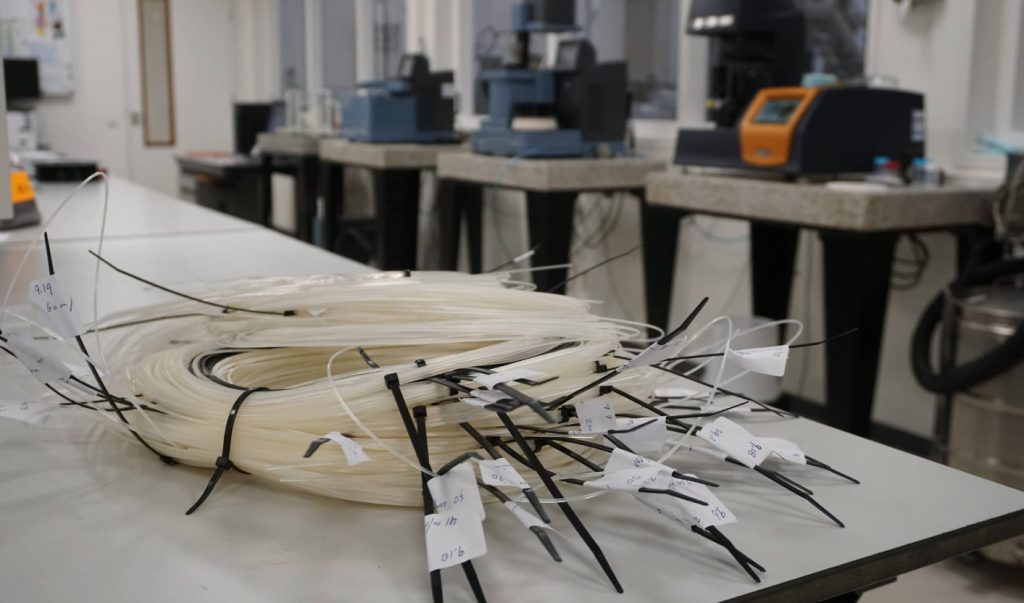Plastics manufacturing company Roffelsen was established in 1977 and has entered the 3D printing sector with its new division, Roffelsen 3D.
Originally focused solely on plastics manufacturing, the company now offers a range of filaments for 3D printing, including PLA, PET, PET-G, and PA6 CF15. Roffelsen plans to expand its offerings further by introducing additional 3D printing materials, such as PLA, ABS, and ASA, in the first half of 2024. Leveraging decades of experience across various industries, Roffelsen aims to uphold its reputation for quality and reliability in the 3D printing market, catering to the diverse needs of users in this field.

Roffelsen 3D’s AM materials offering
At Roffelsen, rigorous testing is conducted to ensure the quality and performance of the filament selection, including PLA, PET, PET-G, and PA6 CF15. PLA and PET-G undergo specialized testing for high-speed printing to maintain consistent results, even under challenging conditions.
The company prioritizes precision and compatibility in its manufacturing processes, holding ISO 9001 certification. Filament diameter is meticulously measured along three axes, ensuring accuracy and consistency. These filaments will be distributed through Roffelsen’s network of resellers, facilitating global access.

Apart from Roffelsen, existing 3D printing companies have developed novel materials in the past. Last year in December, Mechnano and Bomar introduced the T50B masterbatch. Leveraging Mechnano’s exclusive D’Func technology, this new product focuses on Discrete, Dispersed, and Functionalized Carbon Nanotubes, aiming to enhance mechanical properties and maintain consistent electrical performance at the nanoscale within AM resins.
Elsewhere, Netherlands-based 3D printing resin manufacturer Liqcreate introduced the Liqcreate Flame Retardant HDT material to its resin lineup. This engineering 3D printing resin holds a UL94 V0 flammability rating and offers high-temperature resistance, catering to applications in engineering, mobility, consumer goods, and electronics. Recognized for its rigidity and compatibility with various resin-based 3D printers, it is suitable for use with DLP, LCD, and laser-based systems.
Traditional materials companies see potential in 3D printing
Roffelsen is the most recent in a long list of materials companies to enter the 3D printing market. For instance, German chemical company BASF launched its 3D printing division, BASF 3D Printing Solutions (B3DPS), in 2017. Now operating under the name Forward AM, the division is dedicated to expanding BASF‘s presence in the 3D printing industry across materials, systems, components, and services. Since then, BASF has pursued acquisitions of 3D printing companies and formed strategic partnerships to broaden its materials portfolio and strengthen its position in the rapidly evolving 3D printing market.
Back in 2016, adhesives specialist Henkel made its foray into the 3D printing materials market, gradually expanding its portfolio thereafter. In June 2018, the company inaugurated a multi-million Euro facility spanning 700 square meters in Ireland, dedicated to the development of advanced additive materials. Additionally, Henkel partnered with Silicon Valley 3D printing startup Origin’s Open Material Network. This collaboration aimed to pioneer additive manufacturing materials suitable for mass production.
What 3D printing trends do the industry leaders anticipate this year?
What does the Future of 3D printing hold for the next 10 years?
To stay up to date with the latest 3D printing news, don’t forget to subscribe to the 3D Printing Industry newsletter or follow us on Twitter, or like our page on Facebook.
While you’re here, why not subscribe to our Youtube channel? Featuring discussion, debriefs, video shorts, and webinar replays.
Are you looking for a job in the additive manufacturing industry? Visit 3D Printing Jobs for a selection of roles in the industry.
Featured image shows Roffelsen enters the 3D printing market with new materials. Photo via Roffelsen.


